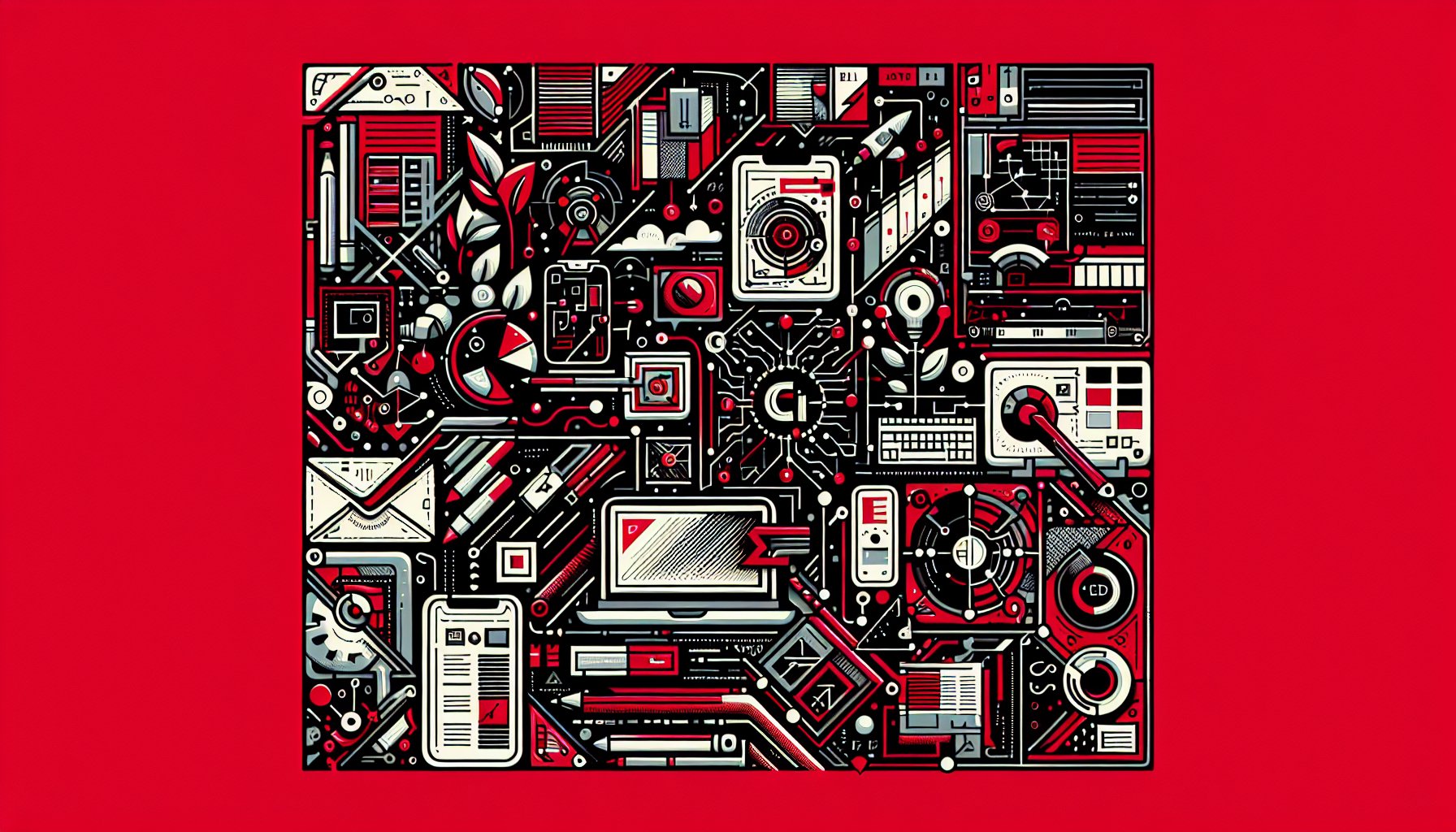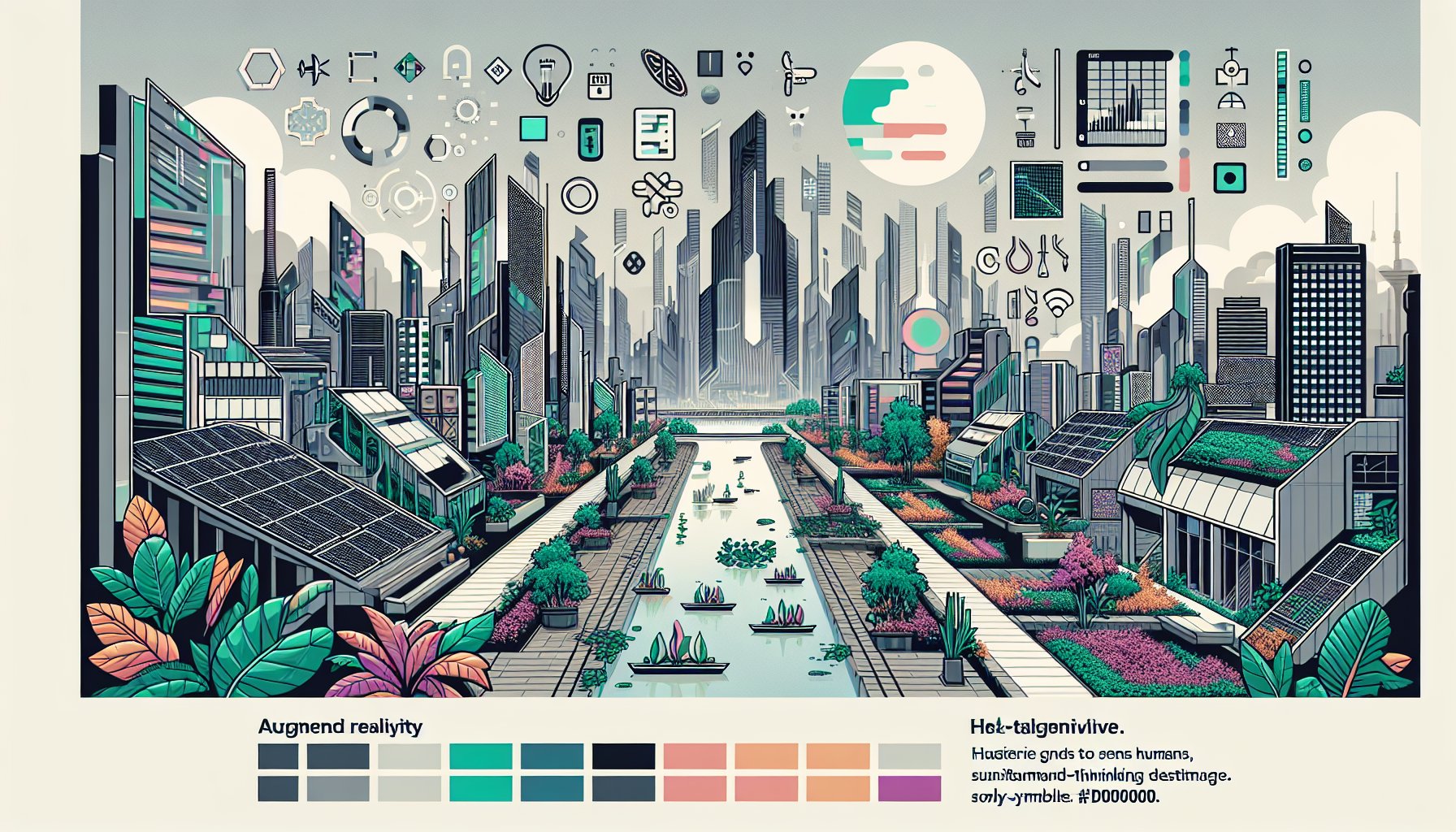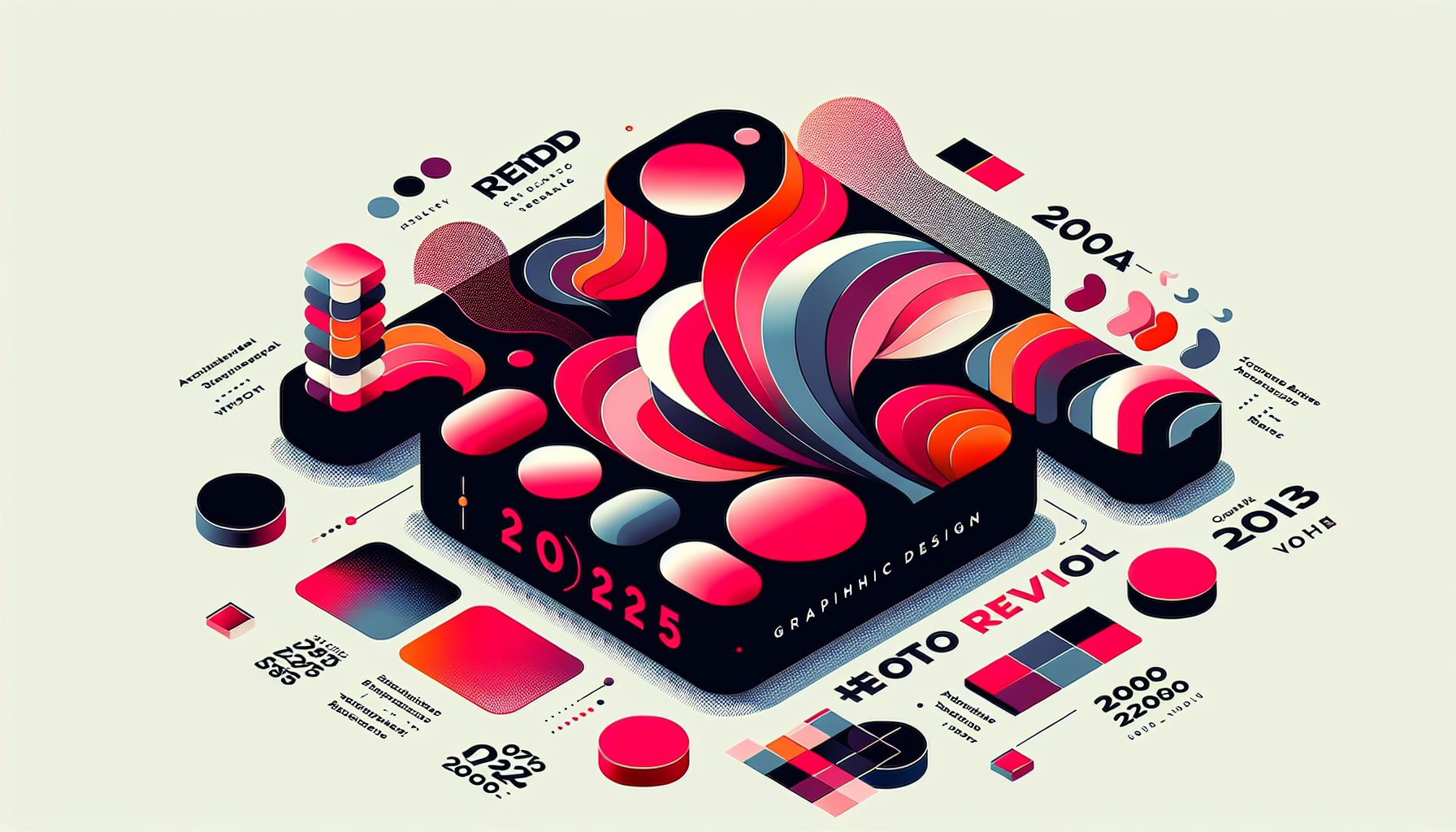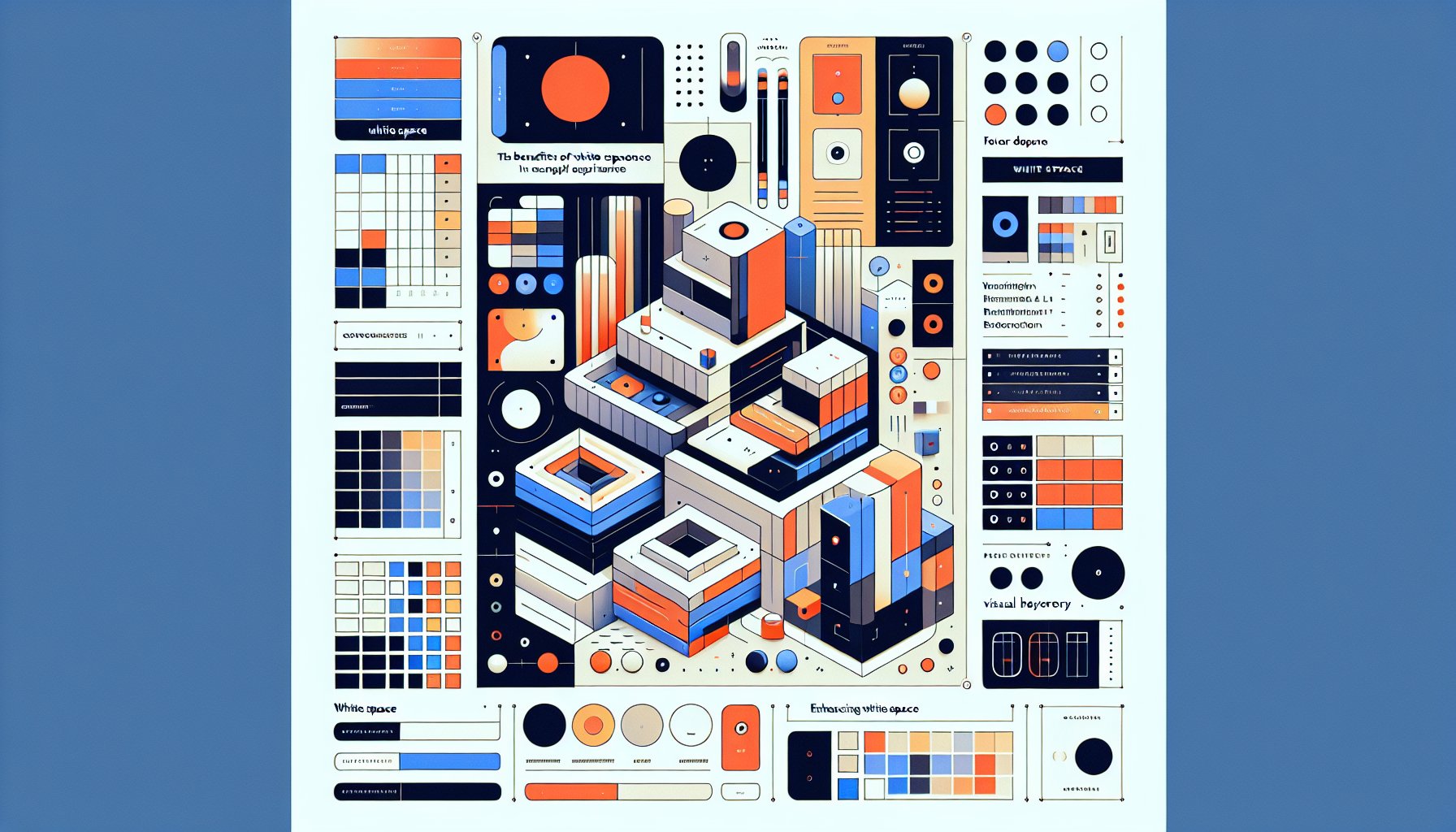Graphic Design
Exploring the Role of Graphic Design in Digital Marketing Strategies for 2025
Discover how graphic design is transforming digital marketing strategies for 2025. Explore AI-driven visuals, AR/VR experiences, and sustainable practices that redefine brand storytelling and consumer engagement.
Oct 15, 2025
14 min read

Certainly! Let's revamp this article to ensure seamless flow, a modern voice, and a unified narrative:
Exploring the Role of Graphic Design in Digital Marketing Strategies for 2025
TL;DR
Graphic design is evolving from mere aesthetics to a powerful tool in digital marketing. Key trends for 2025 include AI-driven personalized visuals, AR/VR experiences, minimalist design, and sustainable practices. As design becomes more integrated with marketing, a harmonious blend of human creativity and technology emerges, paving the way for innovative brand storytelling and cross-platform adaptability.
The Canvas of Tomorrow
Alright, folks, let's take a leap into the future, 2025, to be precise, where graphic design is no longer just dancing with pixels but is the maestro orchestrating digital marketing symphonies. We're talking about a transformation, not just a shift, in how design melds with marketing strategies. As technology races forward and consumer behaviors evolve, design will morph into something more than just eye-catching decor, it'll become a strategic asset in every marketer's toolkit.
Picture this: Artificial Intelligence isn't just an assistant but a creative partner, churning out personalized visual content at warp speed. Tools like DALL-E and Midjourney are already lowering the bar to entry, so even your Aunt Sally can whip up compelling visuals. By 2025, brands will be delivering hyper-personalized experiences, turning data into design gold. Fancy a fashion retailer using AI to tailor an online collection based on real-time trends? Welcome to the future, where storytelling isn't just about tales, but tailored experiences.
And let's not forget our friends AR and VR, who will be stealing the spotlight. By 2025, immersive experiences will be as common as your morning coffee. Imagine a furniture brand with an AR app that lets you see how that couch fits in your living room before you commit. This isn't just marketing; it's a full-on brand embrace, building trust and loyalty that turns customers into evangelists.
Minimalist design will also hit its stride, reflecting our saturated lives and shrinking attention spans. Brands that can cut through the noise with clean, impactful designs will rise above the fray. This isn't about stripping down; it's about focusing on the essentials, guiding users swiftly from curiosity to conviction.
And, of course, sustainability will be a non-negotiable in design. As consumers demand transparency and responsibility, designers will pivot to eco-friendly practices. Imagine projects reflecting not only aesthetic brilliance but a commitment to our planet, a new visual identity aligned with ecological mindfulness.
In essence, the role of graphic design in 2025 is clear: redefine connections. With AI, AR, minimalist ethos, and sustainable designs, marketers will wield design to create experiences that are both impactful and emotionally resonant. The future isn't just a canvas; it's an endless opportunity for those willing to innovate.
Beyond Aesthetics: The Psychology of Design in Consumer Engagement
Now, let's dive into the psyche behind design, it’s not just pretty pictures, folks. As we barrel towards 2025, graphic design's role blooms beyond mere visuals. It's a psychological powerhouse that can make or break consumer engagement. Integrated Business Solutions (IBS) insists that tapping into the psyche of design is your golden ticket to crafting narratives that hit home, turning casual observers into devoted fans.
Take a color like blue, synonymous with trust and reliability. Companies like IBM and Facebook didn’t just pick it for its looks; they banked on its psychological mojo. Color influences mood and decisions, so when users land on a site, those hues, shapes, and layouts can make them feel at home, or send them packing. A well-thought-out design says, "We get you," creating a bond that nudges users to linger, explore, and commit.
The strategic use of layout and typography helps funnel attention where it matters most. A clean, intuitive design means less frustration and more conversions. It’s about guiding prospects down the rabbit hole from curious to customer. Sectors like fashion and tech are acing this game, employing visuals to tap into lifestyle dreams and purchasing desires.
And, oh, the stories we can tell! Integrating narratives into design adds depth and builds bridges with your audience. Nike doesn’t just sell sneakers; it sells a lifestyle, portraying athletes as heroes. This kind of storytelling doesn’t just woo; it hooks and reels in loyalty.
As strategies evolve, the psychological engine behind design will rev up. Elements that tug at heartstrings and stir thoughts will be crucial for crafting engaging experiences. The future isn’t just about message delivery; it’s about making every interaction a meaningful one. In this intricate dance, those who master visual storytelling won't just survive, they'll soar.
Harmonizing Humanity and Technology
Next stop: the dance floor where humanity and technology groove together. As we unpack graphic design’s role in digital marketing strategies for 2025, AI emerges as a game-changer. It's not a trend; it's the evolution that redefines the design and marketing landscape.
Picture this: a fashion campaign where AI-generated designs hit that sweet spot of audience preferences. AI analyzes consumer behavior, social media buzz, and past hits to suggest what's hot. Case in point, a fashion retailer used AI to tailor graphics that felt refreshingly relevant, sparking a surge in engagement and sales. AI isn’t stealing our jobs; it’s giving us superpowers, enhancing the human touch with laser-focused personalization.
And with tools like Adobe Sensei in the mix, routine tasks get a tech boost. Designers can ditch the drudgery and dive deeper into creativity. AI automation creates room for innovation, freeing up time and energy for human insight-driven brilliance.
But let’s address the elephant in the room: creativity and authenticity. Are we at risk of losing the human spark? Hardly. AI complements rather than replaces us. It’s about balance, using AI to amplify our creative strengths while infusing designs with that irreplaceable human touch. This synergy is the fertile ground for campaigns that ring true and resonate deeply.
As 2025 approaches, aligning humanity with technology will be key. Graphic designers armed with AI will unleash strategies that are visually striking and deeply informed. Integrated Business Solutions is all in, championing this harmony. It’s not a choice between human ingenuity and tech prowess; it’s a collaboration that crafts meaningful connections in the digital realm.
Brand Storytelling Through Design
And now, the pièce de résistance: storytelling. In a world where attention spans flit like butterflies and competition is fierce, storytelling in design is a must. Visual narratives transcend mere aesthetics; they forge a brand’s identity and connect on deeper levels.
Take a fashion e-commerce brand that weaves stories of individuality, sustainability, and culture into its designs. Using platforms like Adobe Photoshop, they've crafted visuals that don’t just show clothes, they narrate the journey behind each piece. A behind-the-scenes look at artisans adds layers of connection, making the brand not just seen but felt.
This isn’t just about first impressions; it impacts the entire customer journey. Integrated Business Solutions applied this strategy in a tech campaign, using graphics to show the transformational impact of their products. The result? A vibrant community and a notable conversion boost.
As personalization becomes paramount, visual storytelling grows in importance. Future strategies must leverage analytics to tailor narratives that speak to each customer journey. Imagine using AI to customize graphics based on user behavior, it’s not just engaging; it deepens loyalty.
In summary, graphic design infused with storytelling power isn't just communication; it's connection. As we inch towards 2025, companies like Integrated Business Solutions will harness this power, ensuring narratives not only captivate but also cultivate enduring relationships.
The Multiverse of Mediums
Let's navigate the multiverse of mediums. In 2025, graphic design will thread through a tapestry of platforms that brands leverage to capture hearts and minds. At Integrated Business Solutions, adapting designs for various platforms is akin to exploring vast universes where each medium has unique properties and expectations.
Take Instagram, it's a world of visual storytelling, where design quality reigns supreme. Graphic designers craft not just eye-catching posts but ones that perform across screen sizes and orientations. Think of a fashion retailer's campaign with carousel posts that transition from concept sketches to the final product. Every swipe uncovers a new layer of engagement.
Then there's TikTok, where rapid consumption demands graphics that are instantly captivating and easily digestible. Motion graphics breathe life into still images, creating vibrant stories for a younger audience. IBS embraces these design challenges, making sure every touchpoint maximizes interaction and builds a cohesive brand identity.
Web-to-print technologies further blur the line between online and offline. Designers create assets that seamlessly translate into print without losing their impact, think digital ads that morph into captivating brochures. A Nigerian print company demonstrated this beautifully, transitioning engaging online graphics into high-quality prints, boosting engagement and conversion.
In this multiverse, IBS champions a flexible design approach, embracing platform-specific nuances. Brands that navigate this landscape successfully connect with audiences in meaningful ways. It's not just about aesthetics; it's about crafting narratives that endure, engaging consumers and securing loyalty.
Metrics and Masterpieces
Moving on to metrics, the unsung heroes of design. In our quest for mastery over digital marketing strategies by 2025, measuring the impact of design becomes crucial. Design's true power lies not just in its beauty but also in its data-backed contribution to business objectives.
Engagement metrics, click-throughs, time spent, social interactions, serve as a compass. A well-executed visual campaign can boost click-through rates, leading to more conversions. Take the case of a fashion e-commerce rebrand that modernized visuals, resulting in a 40% surge in user engagement and a 25% sales spike.
At Integrated Business Solutions, metrics are woven into the design process. Tools like Google Analytics track real-time performance, guiding design decisions. A/B testing unravels which elements drive engagement and refines design for strategic alignment.
Web-to-print convergence adds another layer. Companies in Nigeria saw increased customer bases by blending digital marketing with print, proving design and data's symbiotic power. The seamless marriage of SEO strategies and promotional design amplifies results, reinforcing that data and design can, and should, dance.
In this landscape, metrics illuminate the path from design to masterpiece. As technology and marketing blur, those who leverage insights rise as leaders in digital marketing. The blend of metrics and design fosters connections, ensuring brands resonate in a visually driven world.
Crafting Future-Ready Design Systems: The Importance of Flexibility
In the grand tapestry of digital marketing, and especially looking ahead to 2025, the mantra is flexibility. At Integrated Business Solutions, crafting future-ready design systems means embracing change as a constant companion.
Take fashion, where trends shift faster than you can say "Hemline." Designers must create visuals that appeal globally yet adapt locally. Our team recently helped a fashion brand expand internationally, using flexible design templates to tailor visuals for specific regions without losing brand integrity. This adaptability boosted local appeal while maintaining a cohesive identity.
Web-to-print systems exemplify flexibility, streamlining print processes with digital ease. Nigerian companies embracing SEO and social media marketing found that adaptable design wasn’t just beneficial, it was transformative. It made navigating the digital shopping landscape a breeze.
At IBS, flexibility isn't an option; it's a necessity. Courses like Photoshop and Digital Graphics I prepare designers to innovate within this adaptable framework. With a mindset primed for change, designers tackle challenges with fresh creativity, ensuring relevance in a competitive world.
In essence, flexibility isn't just operational; it's strategic. As 2025 nears, brands that embrace change and leverage technology will thrive. At IBS, this commitment shapes not just our approach to design, but our broader digital marketing strategies that drive real results.
Collaborating Across Disciplines
In the web of digital marketing, designers aren't just in their bubbles, they're connectors, weavers of a collaborative tapestry. At Integrated Business Solutions, cross-departmental synergy isn't just encouraged; it's the secret sauce.
Picture a new product launch. The marketing team dreams big, but without designers, that vision could fade into obscurity. Designers bridge the gap with color theory, typography, and layout, crafting visuals that align with the brand message and captivate audiences.
Take a recent campaign for a sustainable fashion line. Designers collaborated closely with product development to reflect eco-friendly values in visuals. Insights into materials and stories allowed for graphics that engaged customers ethically and emotionally.
This collaboration isn't just about visuals, it's a symbiosis of ideas. Designers at IBS participate in strategy meetings, offering insights on how visuals can enhance SEO or social campaigns. For an online printing initiative, designers contributed to user experience discussions, ensuring aesthetics and functionality aligned.
As the web-to-print landscape evolves, tight integration with IT is crucial. Designers must communicate effectively with developers to balance creativity and technical feasibility. At IBS, this collaboration ensures we remain at the forefront of digital marketing innovation.
In 2025, designers who navigate collaboration will be key players in effective marketing strategies. They're not just creating images; they're crafting narratives that stand out in a crowded digital world, weaving strategy, creativity, and technology into impactful stories.
Sustainability in Design: Crafting Eco-Conscious Digital Strategies
Welcome to the era where green isn't just a color; it's a way of life. As environmental consciousness grows, businesses are weaving sustainability into their strategies, even in graphic design. Integrated Business Solutions knows that eco-friendliness should ripple outward from design processes and into broader marketing strategies.
It starts with choosing materials and processes wisely. In the digital realm, this means prioritizing designs that minimize waste and energy use. Eco-friendly print options, think recycled paper and vegetable inks, show a commitment to environmental responsibility that resonates with conscientious consumers.
Storytelling about sustainability is powerful, too. Visual campaigns can compare traditional versus sustainable practices, engaging and educating audiences. Platforms like Instagram and TikTok amplify these narratives, inspiring industry-wide adoption of greener strategies.
Sustainability isn't just a feel-good move; it's about brand perception and loyalty. Transparency and ethics attract environmentally aware consumers. A case study on reducing carbon emissions through design choices can serve as both marketing tool and trust builder.
As 2025 beckons, sustainability isn't a trend, it's a baseline expectation. IBS is at the vanguard, crafting strategies that are visually compelling and environmentally responsible. This commitment not only strengthens a brand's position but also contributes to a healthier planet. In every pixel and design choice, we champion sustainability, setting benchmarks for the industry.
The Future is Visual: Integrating Virtual and Augmented Reality in Marketing Design
The future, dear readers, isn't just coming, it's here. Visual tech, especially VR and AR, is reshaping how brands engage with audiences. Integrated Business Solutions sees the future of design as not just about visuals but immersive experiences that engage consumers on a sensory level.
Imagine slipping on a VR headset to enter a store that feels as real as any brick-and-mortar. AR lets customers see products in their own spaces before purchase. A furniture retailer's AR app showing how a couch fits in your living room doesn’t just spark interest, it builds purchasing confidence.
IBS knows consumers crave these immersive experiences. Graphic design merges with these technologies to create branded moments that captivate and build lasting relationships. It's strategic tech use, not just novelty, enhancing user engagement. A cosmetics brand could use AR for virtual make-up try-ons, helping customers find products that match their style.
VR and AR aren't just for engagement; they're treasure troves of data on customer preferences. Brands can refine marketing strategies and deliver personalized content, maintaining relevance and innovation.
As digital landscapes shift, design is the thread binding creativity and technology. Through design, these experiences are crafted and enhanced, ensuring every touchpoint resonates. IBS isn't just riding the tech wave; we're charting the course, transforming brand interactions into memorable experiences.
So, here's the challenge: How will your brand leverage VR and AR not just for ads but for unforgettable experiences?
Need Help?
Check out these related products that can help:



